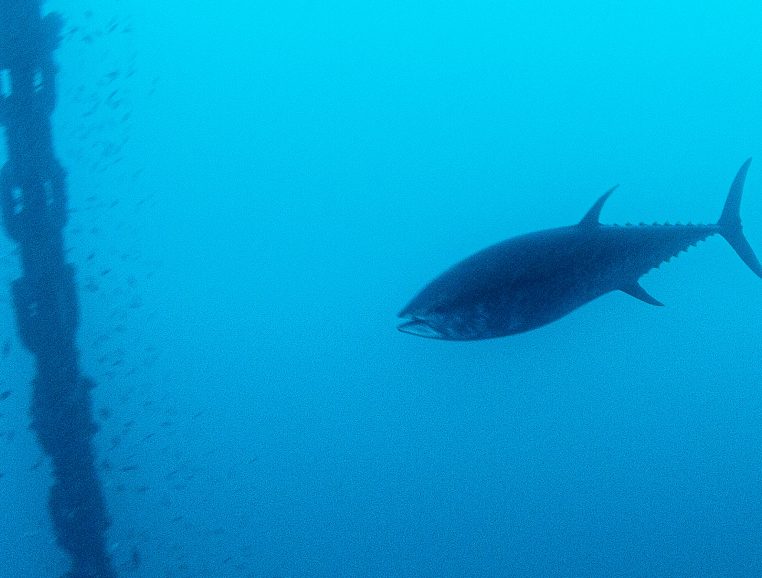Overfishing threatens bluefin tuna
- Home
- Actualités
- 7. Overfishing threatens bluefin tuna

In the
European Red List of Marine Fish
established in 2015 by the International Union for Conservation of Nature (IUCN), the Atlantic bluefin tuna is listed as “Near Threatened”.
Overfishing and overcapacity of fishing fleets are the main cause of the depletion of bluefin tuna.
How did we get here?
From 1990 to 2007, catches peaked at record levels of around 50,000 tonnes/year, well beyond the capacity of the stock to regenerate. Noting the overexploitation, ICCAT set up a quota of about 30,000 tonnes per year in 1998, without any positive result because the quota is higher than the scientific recommendations and, above all, it is not respected by many countries, and this until 2007.
DID YOU KNOW?
In 2006, in order to avoid a total collapse of the populations, a recovery plan for theEastern Atlantic and Mediterranean was adopted, including measures to monitor and control fishing activities (closed seasons, obligation of a “minimum conservation size” of 115 cm or 30 kg (certain types of fishing have derogations at 8 kg or 75 cm), ban on reconnaissance aircraft, presence of observers on board vessels, traceability of catches, etc.), but the fishing quotas are still too high


A small victory at CITES
Under pressure from NGOs and certain states (including the Principality of Monaco and France) who advocate the inclusion of the species in Annex 1 of the Convention on International Trade in Endangered Species of Wild Fauna and Flora (CITES) – which would have the effect of prohibiting international trade – the quota is revised downwards (13,500 tonnes) for 2010, following scientific advice for the first time; an important victory for organisations working for sustainable bluefin tuna fishing. !
A situation that has improved since 2009
Thanks to the strengthening of the recovery plan and more effective control, the bluefin tuna situation is improving from 2009 onwards. Declared catches are decreasing, aerial monitoring shows that young bluefin tuna are more abundant, the spawning biomass is increasing, and fishermen are observing them more regularly. Today, the species is no longer “overexploited” but the current stock, although in better condition, is far from having recovered its preindustrial level, and bad practices such as illegal fishing persist.
With fishing quotas set to increase (32,240 tonnes for 2019, 36,000 tonnes for 2020 – including 19,460 tonnes for the European Union and 6,026 tonnes for France) – the highest levels since the recovery plan was put in place – it will be up to the international community, scientists and consumers to carefully monitor the situation of Atlantic bluefin tuna over the coming years. To be continued, then!

The corner of the experts







